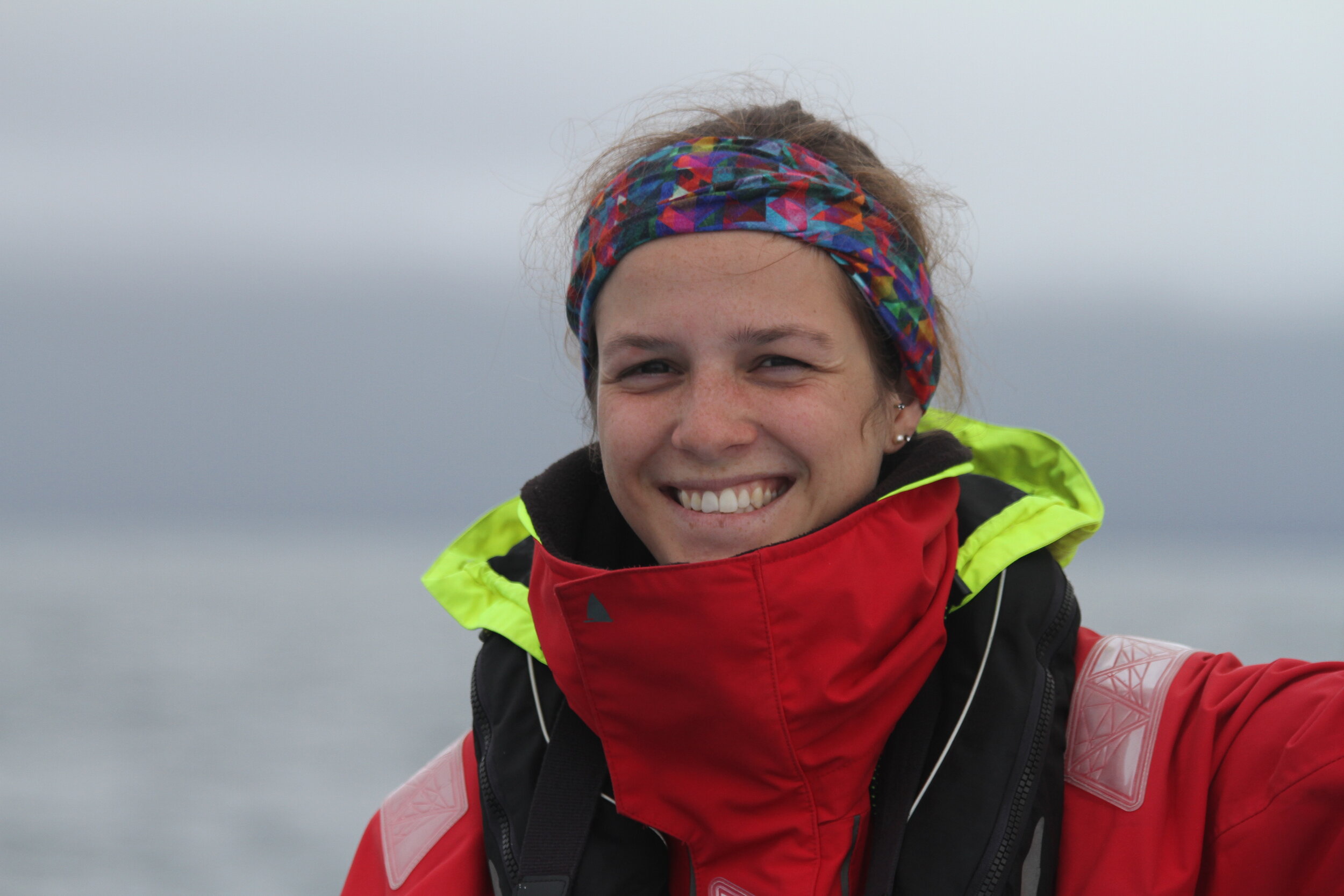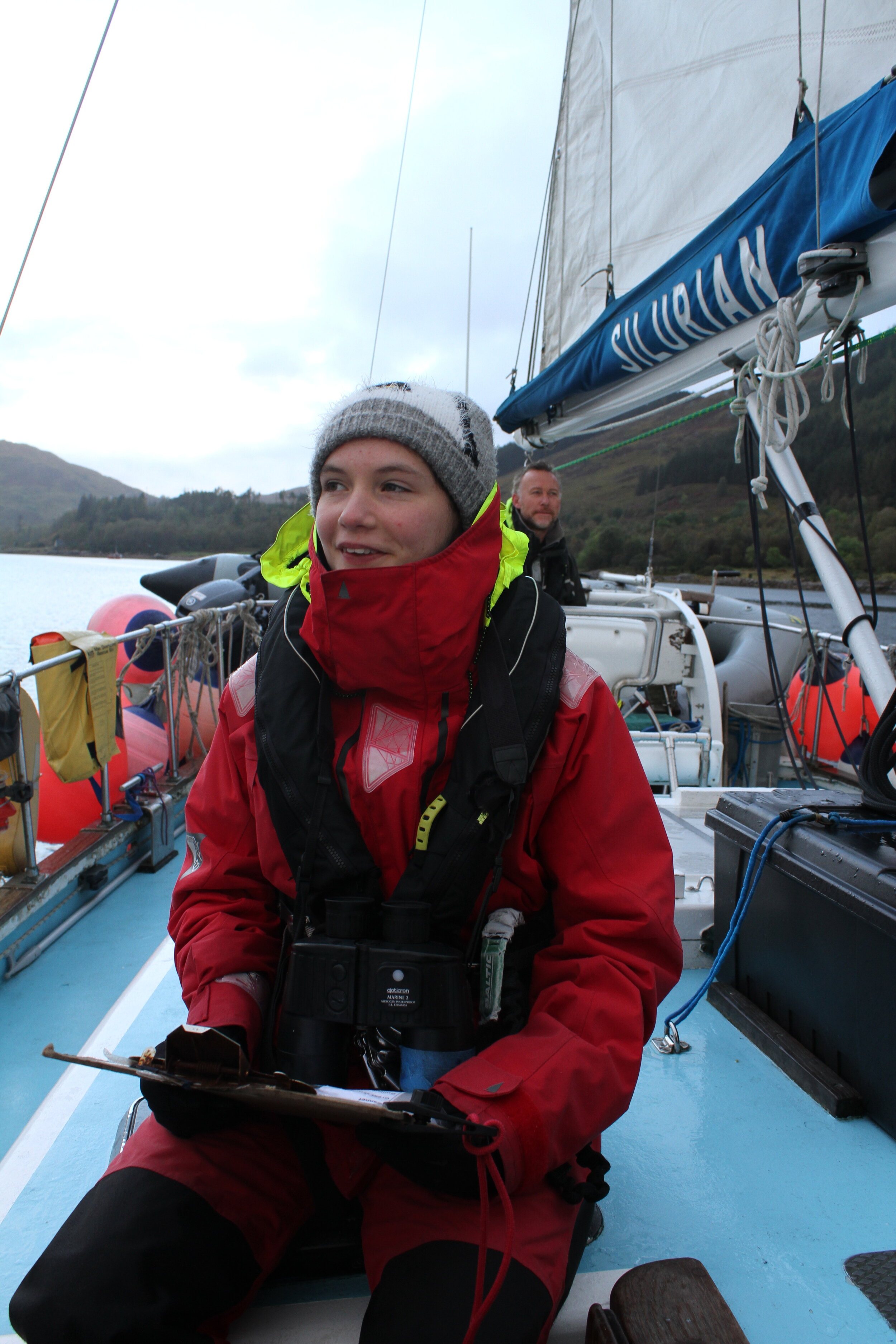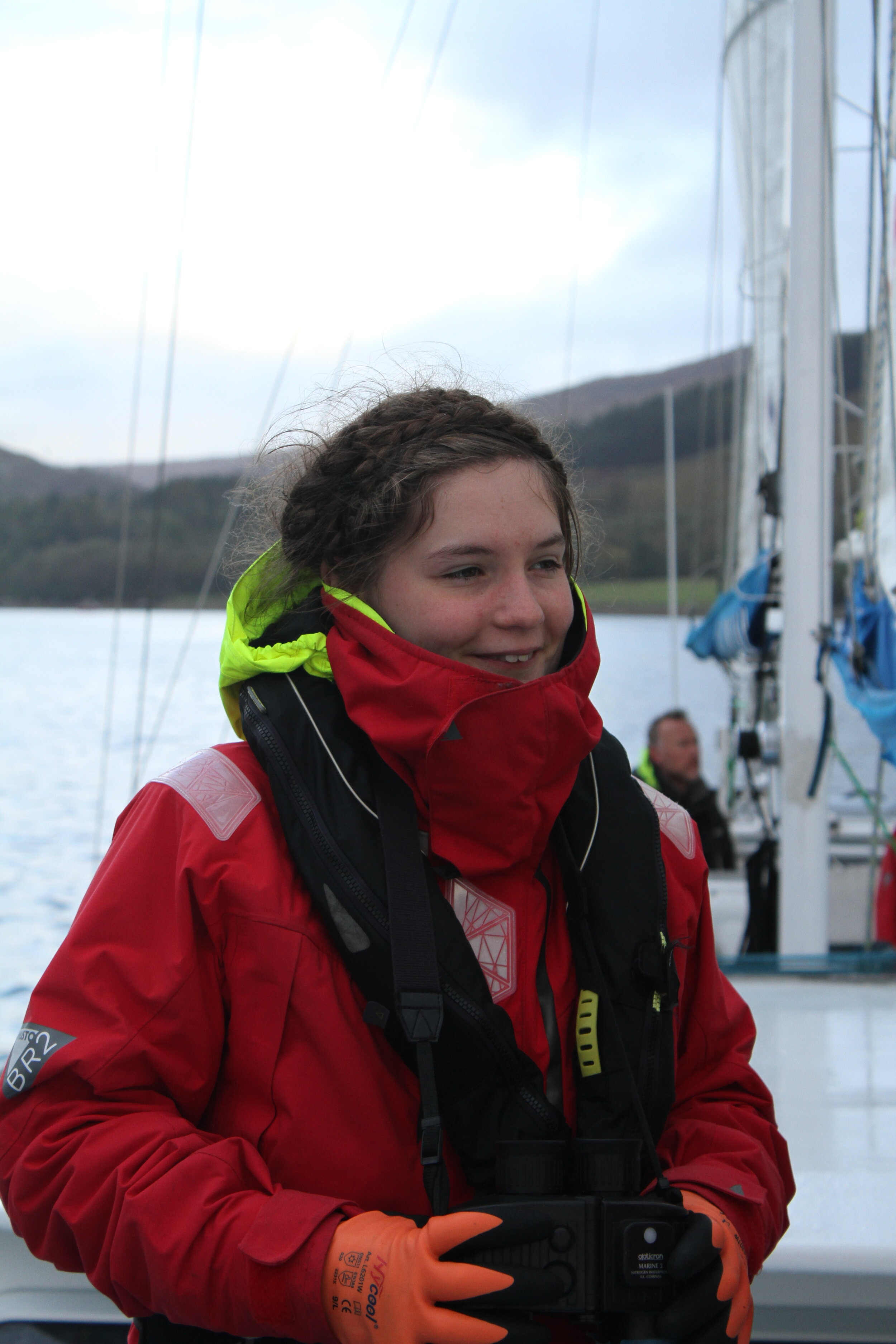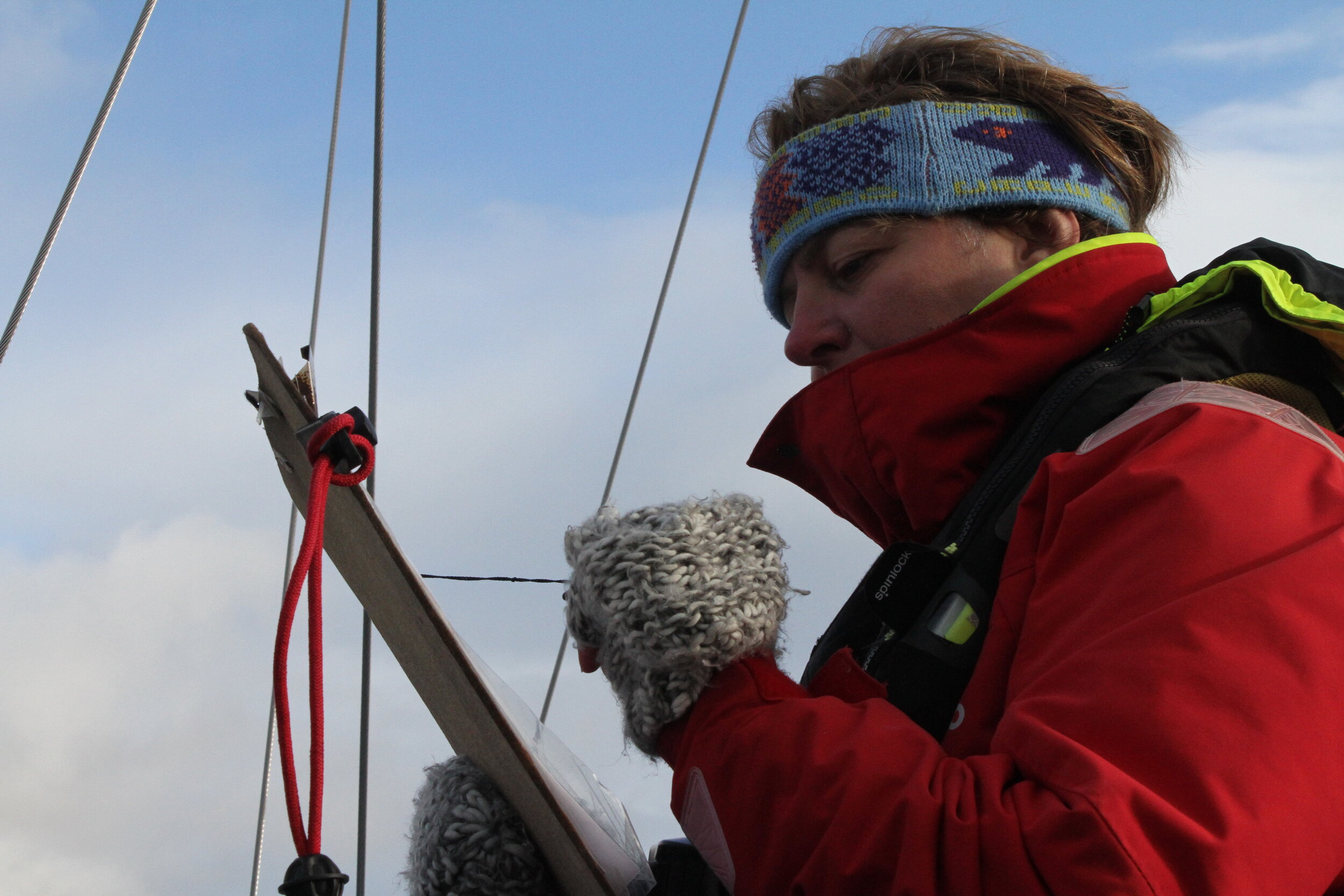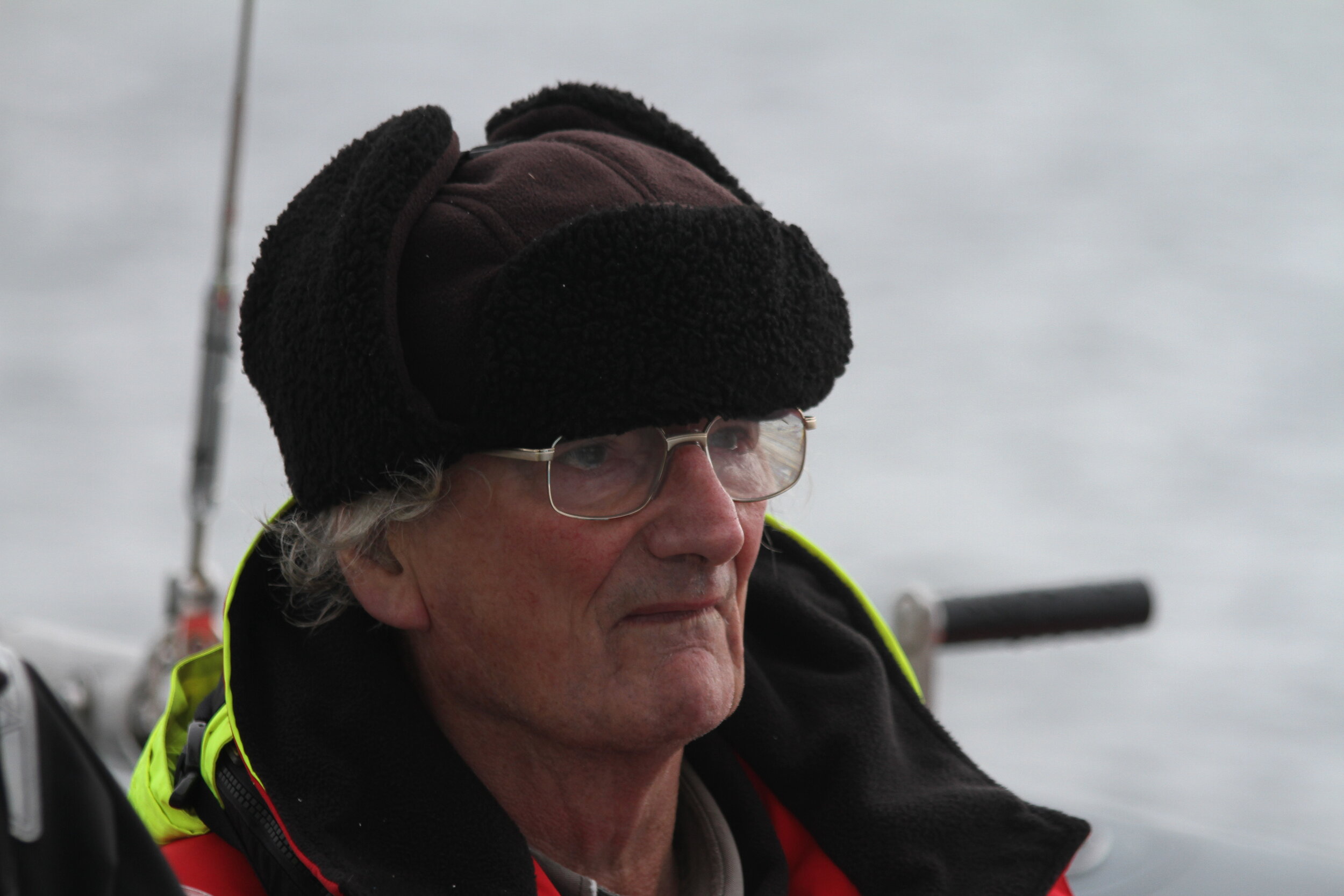Silurian surveys Joint Warrior military exercise
Joint Warrior occurs twice a year in the Hebrides - in the spring and autumn
Joint Warrior is a UK led multinational exercise that involves numerous warships, aircraft, marines and troops. It is the largest military exercise in Europe, bringing together all three UK services (Royal Navy, Royal Air Force and British Army), as well as those from other nations. These exercises typically occur twice a year, in the spring and autumn months. Military sonar, used during the exercises emits intense loud noise that can disturb and harm whales and dolphins, which rely on their sensitive hearing to navigate, find food and communicate. Each year, monitoring surveys on board Silurian are scheduled to coincide with the Joint Warrior Exercises, during which the crew and our dedicated team of volunteer citizen scientists are trained to collect visual and acoustic data to monitor cetaceans in the area.
OUR BIODIVERSITY OFFICER, BECKY, SHARES THE HIGHLIGHTS OF THE LATEST JOINT WARRIOR SURVEY ON BOARD SILURIAN BELOW…
Six new volunteers joined us on board on the 6th October, eager to learn more about the effects that military exercise have on whales and dolphins (collectively known as cetaceans). After initial introductions, everyone settled into their respective cabins, before tucking into bowl of spaghetti bolognese. We spent the rest of the evening getting to know one another, as well as learning all about the whales, dolphins and porpoise that we may encounter and how to spot and identify them. More training commenced the next morning; with data recording practice, distance estimation training and spotting exercises. Before setting sail we all sat round the table to look at the chart and discuss the rough plan for the week. Although our main objective was to monitor the military vessels, the weather looked very unsettled and we were forced to come up with a plan which would allow us to survey more sheltered waters. With everyone geared up and ready to go we left Tobermory harbour and sailed towards Coll, with the best of the weather forecast for that morning. Although it was initially a foggy morning, the skies cleared and we reached the Cairns of Coll, before heading back east and anchoring in Loch na Droma Buidhe, one of my favourite spots! That evening some of the group went ashore to explore, before we gathered round the table once more to learn about the bird life that we might encounter. With a few keen ‘birders’ on board this turned into a really enjoyable discussion about which birds all of us would want to see. Our mission was to find a great northern diver for our skipper Quentin, a storm petrel for Milo and a white-tailed eagle for Nina!
The next day, with the weather steadily worsening, we decided to survey the waters along Loch Sunart, a beautiful loch just to the north west of Tobermory. The wind continued to build during the day and we encountered a variety of conditions, surveying through hailstorms, torrential rain and pockets of brilliant sunshine. Despite some choppy waves we did spot a few harbour porpoise, with the hydrophone picking up 30 porpoise detections! That evening we anchored to the west of Carna island and had one of Silurian’s infamous plankton parties! We spotted a variety of different kinds of plankton from our sample under the microscopes, identifying an abundance of arrow worms and copepods.
With the weather remaining unsettled and force 8-9 winds predicted, we decided to sail down the sound of Mull, before attempting to sail south the next morning. However, we soon realised that this would not be possible as a large swell started to roll in, reminding us of how rough it must be further offshore. We therefore turned back north before spotting the first bird on our checklist. A white-tailed eagle had soared low across the bow of the boat heading for the Mull shoreline, passing an amazing rainbow on the way!
We continued north sailing up Loch Linnhe, with the wind continuing to build. One particular bird seemed to be enjoying the conditions however, as a storm petrel coasted past. ‘Yes!!’ Shouted Milo, as the rest of the team cheered! Another bird ticked off the list. Just half an hour later a shout from Pete of ‘NORTHERN DIVER!’, meant that the bird list was complete! That evening we anchored in Loch a’Choire, a beautiful if not slightly gusty spot. On the final day of surveying we sailed back up the sound of Mull, spotting a large group of porpoise and well as more white-tailed eagles seen along the way. After giving Silurian (and ourselves) a thorough clean we had a lovely last evening, heading out for dinner before returning to the boat for a variety of games.
During the survey we covered 159.4 nautical miles, with our hard-working citizen scientists spending over 27 hours on effort and collecting over 26 hours of acoustic recordings
Tracklines showing where Silurian travelled on HWDT13
Massive thanks to the citizen scientist team who joined us on board: Adrienne, Esther, Miriam, Nina, Pete and Rosie! You all did an amazing job surveying in difficult conditions and it was an absolute pleasure to sail with you all. We couldn't collect the vital data without the citizen scientists that survey our waters!







